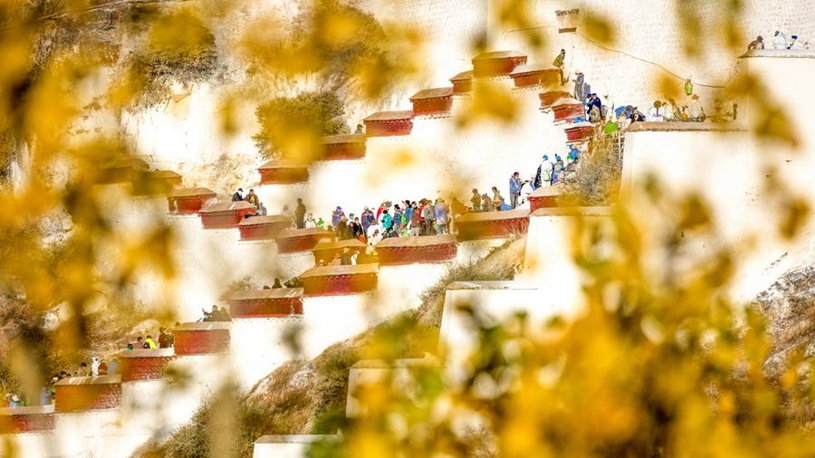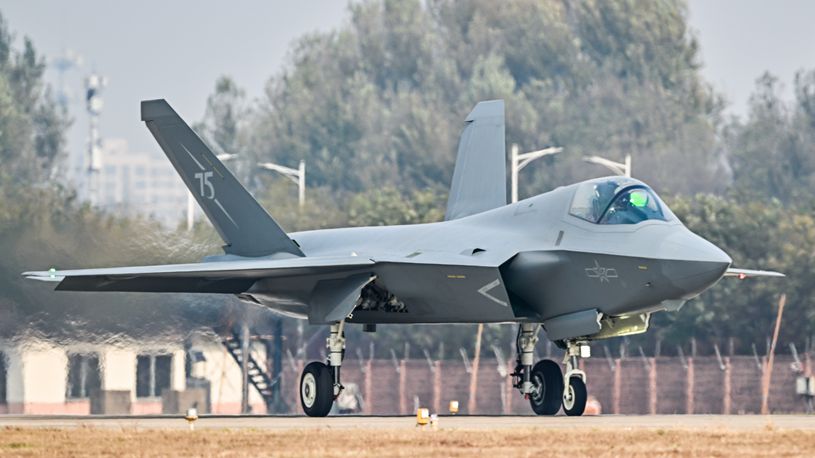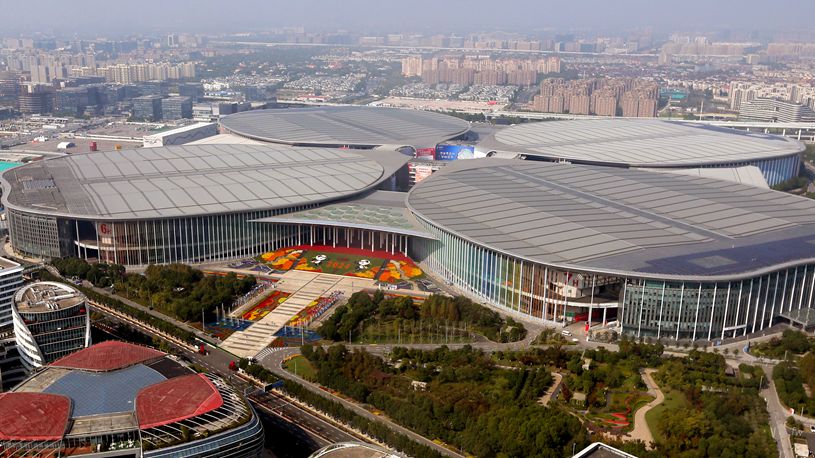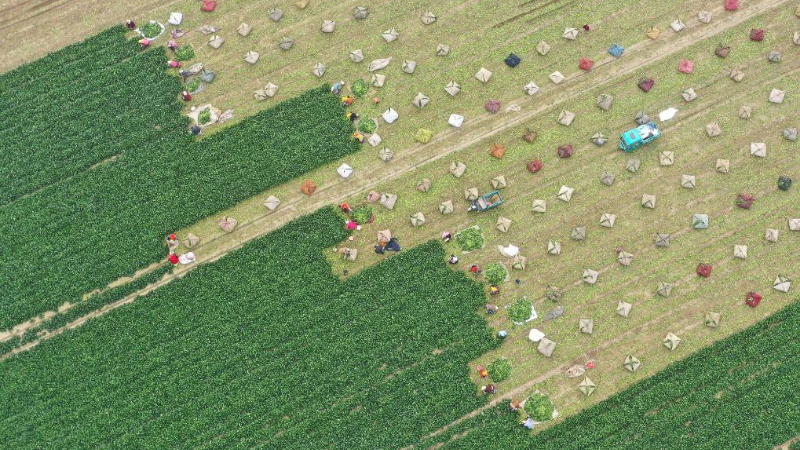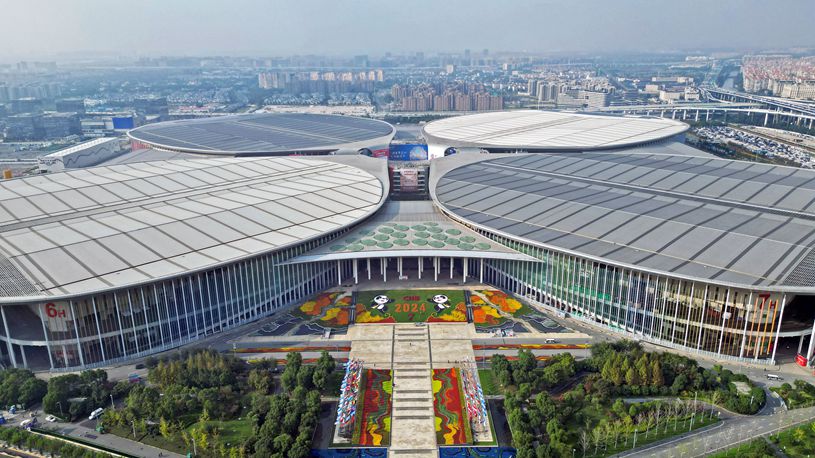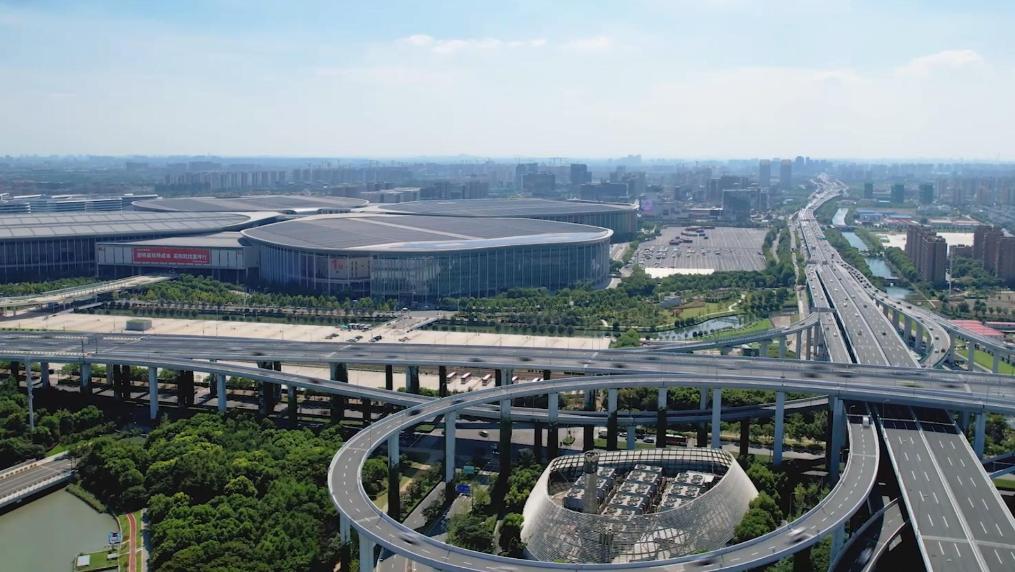BEIJING, Nov. 6 (Xinhua) -- China's autumn grain harvest this year has received a boost from the "Heavenly Palace."
At a crop breeding center in Shanghai, rice ears have turned yellow and fully matured after over 100 days of growth. These rice seeds were part of a 6-month-long breeding experiment conducted aboard China's space station Tiangong (Heavenly Palace) in 2022. They were planted upon return to Earth and have recently yielded plentiful harvests.
Scientists said they sent six rice seeds to space aboard the Wentian spacecraft two years ago. In-orbit taikonauts bred 59 seeds from the group and brought them back to Earth. After a selection, the scientists cultivated some high-quality ones in an artificial climate room. They subsequently got around 10,000 new seeds and continued selecting a portion for further large-scale growth in the farm field.
The seeds bred in the space station can be seen as the first generation, those cultivated in the artificial climate room as the second, and those grown in farm fields as the third, according to Zheng Huiqiong, a researcher responsible for the space rice study at the Center for Excellence in Molecular Plant Sciences under the Chinese Academy of Sciences. She said her team had obtained preliminary findings by studying the three generations of space rice seeds.
"The research findings demonstrate that the seeds grown in space can still reproduce on Earth, suggesting the possibility of food production in a space environment," Zheng noted.
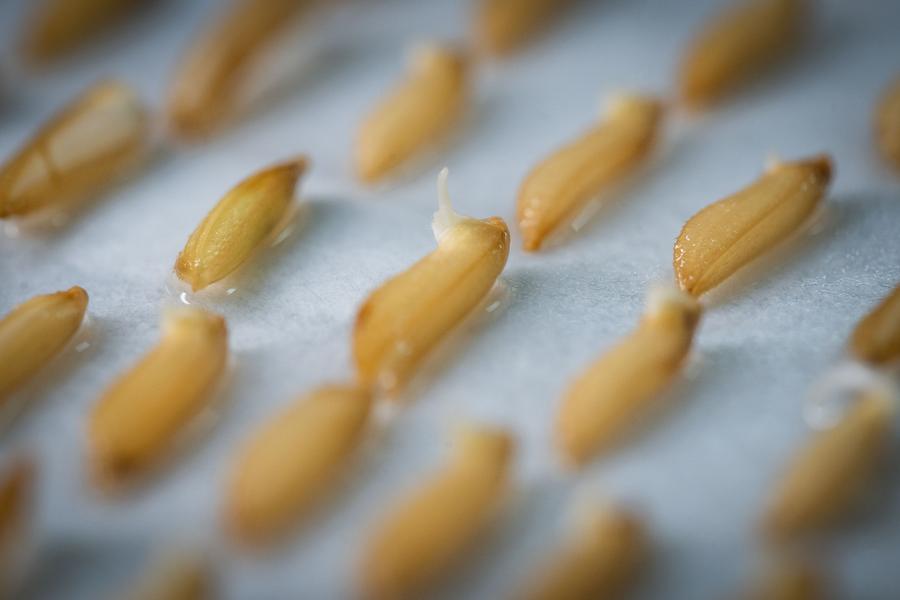
Space breeding refers to exposing seeds and strains to cosmic radiation and microgravity during a spaceflight mission to mutate their genes.
When the space-bred samples are brought back to Earth, scientists will examine and evaluate their mutations. Compared with natural bred types, some are positive, conferring properties favored by farmers, such as greater yields, shorter growth periods and better resistance to diseases.
More importantly, space food is safe for human consumption. Zhao Hui, an expert with the China Academy of Space Technology, said that unlike genetically modified food-transferring genes from other species, space-bred seeds and strains undergo a mutation of their own genes only.
SWEETER TASTE, MORE ENERGY
How does the rice with an out-of-this-world origin taste? Zheng said it might be sweeter than those bred on Earth.
The research team discovered that the content of glucose and fructose, two types of sugar, in the space-bred seeds was significantly higher than that of ordinary seeds. "We estimated that they are approximately five or six times higher," Zheng said. Furthermore, the space-bred seeds also contained slightly more protein than ground-bred ones.
"That means space-bred rice tastes sweeter and has more energy," the researcher added.
The density of rice leaves also differs. Compared with naturally bred types, the leaves of the space-bred rice are relatively sparse, making it difficult to achieve high-density planting. Researchers said they would conduct further studies to find the reasons and make molecular modifications.
The 120-day rice experiment on the Tiangong space station in 2022 represented an achievement as it is the first time ever that rice has been cultivated from germination to reproduction in orbit, showcasing the complete life cycle of this crop. Previously, such seed-to-seed cultivation had only been achieved with Arabidopsis, canola, peas and wheat on the International Space Station.
"Growing rice in space is much more challenging compared to growing on Earth," Zheng said.
The vacuum environment of space requires an artificial setting for rice cultivation, which involves a completely enclosed environment where light, gas, and water are controlled by taikonauts. Especially for the light, as rice requires high levels of sunlight for photosynthesis. However, since artificial light sources cannot replicate sunlight perfectly, these rice varieties have to undergo screening or modifications to adapt to the artificial light, Zheng explained.
China has been a pioneering country seeking to apply the technology of space breeding to agricultural farming on the ground.
It conducted its first space breeding experiment in 1987, launching packets of seeds on a satellite and returning them to Earth after exposure to cosmic radiation.
Since then, hundreds of plant species seeds have traveled with dozens of the country's retrievable satellites and Shenzhou spaceships.
In the follow-up study, scientists will conduct a comprehensive analysis of the yield and agronomic characteristics of space-grown rice for space food security concern. ■

